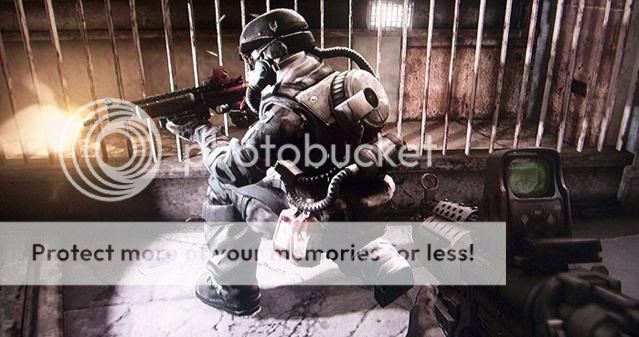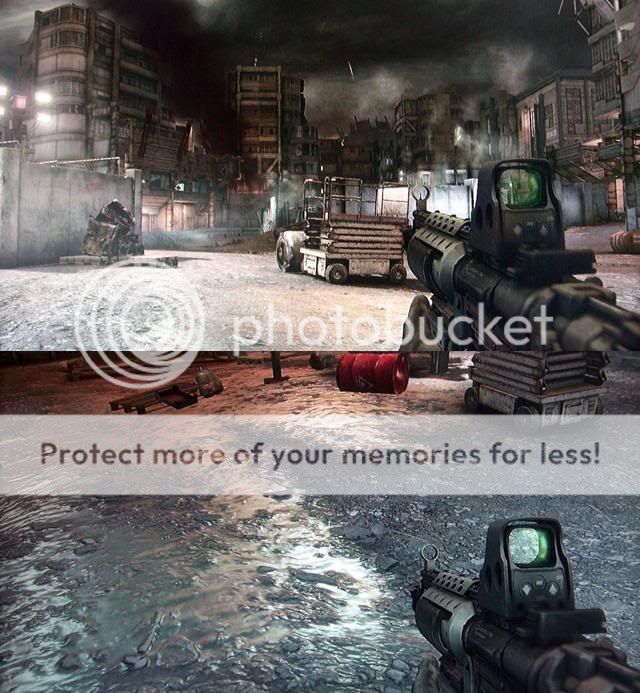If there's one thing that there was a ton of at this year's E3, it was shooters. While most of them—specifically Gears of War 2, Resistance 2, SOCOM, and even the single-player of Killzone 2—felt improved but familiar (and in a sense less exciting), the multiplayer of Killzone 2 was incredibly surprising. Though it wasn't playable on the floor, I had a chance to sit in with Sony and Guerrilla in a closed-door preview of the multiplayer side of the game and what I saw impressed me.
With eight maps and a handful of modes scheduled for launch, performance-related ranks and unlockable goods, the ability to manually select weapon load-outs for characters, and an online web community that lets players check stats and send messages, Killzone 2 multiplayer sounded awfully generic as the presentation began.
Admittedly, one new feature sounded cool. In Killzone 2, online games don't "end" as you might expect. Multiple matches can take place within the span of a single game without any reloading or break in the flow of action. Once you complete a specific match objective that would normally win the game—say killing the other team—the objective rolls over into a new one and the winning team is awarded a match point. It's completely organic. This lets players pick any number of matches for a single game before moving to the next map.
Despite the few little differences announced early in the presentation, there was a certain feeling in the room that was somewhat "been there, done that" about the whole thing. Once the devs started talking about the game's class system, though, that changed. Surprisingly, Killzone 2 has managed to innovate in a way that I think is genuinely unique: the game meshes the awesome archetypal job class structure of Team Fortress 2 with the ability to equip a sub-job like in Final Fantasy XI.
Basically, you select a primary job—drawn from your basic sniper, scout, engineer, medic, heavy, demoman, and solider-style Team Fortress 2 classes—and your secondary job from the same pool. Each job has a primary and secondary ability called badges that are combined when you mix them into a hybrid class. So, for example, a player who plays a pure "Medic" has access to a primary badge which revives dead players and a secondary badge which throws med-packs. The same players switches to a primary of "Assault" and a secondary of Medic to create the "Assault Medic," which has double armor and the ability to throw med-kits. This lends itself to a ton of permutations, including my personal favorite, the robot-master "Engineer Tactician," which can create an automated turret with its primary and call in an air support sentry bot with its secondary.
Also unique to Killzone 2 multiplayer is the way it handles squads in parties. While players can run around and gun at their leisure online like any normal shooter, players can group themselves into active squads on the fly to create mini in-game cohesive units that have a dedicated chat channel and improved team functions to get small objectives done. This helps organize some of the chaos on bigger maps—especially in the objective-based multiplayer.
The clan system also proved to be incredibly interesting. The main stand-out feature is clan valor. This clan currency is used instead of win rankings. Each clan starts with 1,000 valor and can use it to place bets during clan matches; the more valor you have, the better your clan is. Tournaments can have a small entry fee and a huge reward, and if a clan reaches 0 valor, lesser tournaments are the only way to win back valor. Better still, the clan features of the website allow players to create clan challenges with valor online at any time.
I walked into my Killzone 2 meeting skeptical but walked out impressed. If Guerrilla can pull all of this off with the same, uncompromising graphics engine from the single-player experience—something the company made explicitly clear that it was doing—then the PlayStation 3 may just have its be-all, end-all multiplayer shooter for 2009.
Buzz up!


 Hört sich alles sehr fein an, vor allem im Multiplayer hat man sich Gedanken gemacht.
Hört sich alles sehr fein an, vor allem im Multiplayer hat man sich Gedanken gemacht. 



 . Der Qualtiät des Videos schadet das aber nur gerinfügig. Das Ganze sieht nämlich richtig fett aus und ich bin überzeugt, dass der Vorgänger locker übertroffen wird (was aber nicht heißt, dass der schlecht war).
. Der Qualtiät des Videos schadet das aber nur gerinfügig. Das Ganze sieht nämlich richtig fett aus und ich bin überzeugt, dass der Vorgänger locker übertroffen wird (was aber nicht heißt, dass der schlecht war)..gif) denn der, welcher das spiel zockt, kann ja wirklich nichts
denn der, welcher das spiel zockt, kann ja wirklich nichts  .
.